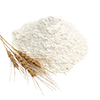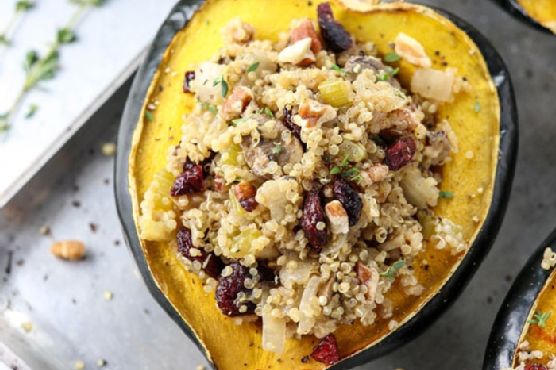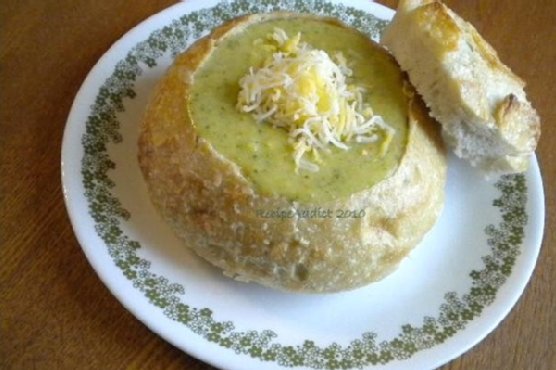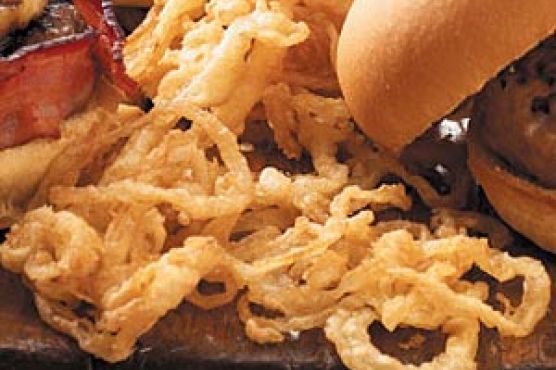Laminated Basil Pasta with Garlic Brown Butter Sauce
The recipe Laminated Basil Pasta with Garlic Brown Butter Sauce can be made in around 1 hour and 40 minutes. This recipe makes 4 servings with 596 calories, 21g of protein, and 34g of fat each. For $1.55 per serving, this recipe covers 20% of your daily requirements of vitamins and minerals. Head to the store and pick up black pepper, unsalted butter, eggs, and a few other things to make it today. Plenty of people really liked this main course. 5995 people were glad they tried this recipe. It is brought to you by Just a Taste. Taking all factors into account, this recipe earns a spoonacular score of 72%, which is solid. Springtime Pasta With Brown Butter Garlic Cream Sauce, 20 Minute Brown Butter Chunky Basil Pesto Pasta, and 30 Minute Garlic, Sage and Brown Butter Pasta are very similar to this recipe.
Servings: 4
Preparation duration: 90 minutes
Cooking duration: 10 minutes
Ingredients:
1/4 teaspoon fresh black pepper
1/2 cup halved cherry tomatoes
2 large eggs, lightly beaten
About 2 cups all-purpose flour
1 cup fresh basil leaves (See Kelly's Note)
2 teaspoons minced garlic
Parmesan cheese, for serving
1/2 cup (1 stick) unsalted butter
Equipment:
plastic wrap
stand mixer
baking sheet
rolling pin
knife
pot
frying pan
bowl
Cooking instruction summary:
Make the pasta:Mound the flour on your work surface, creating a large well in the center. Pour the lightly beaten eggs into the center of the well, then add a pinch of salt. Using a fork, slowly work the flour into the egg mixture until the dough starts to come together.Using your hands, work the remaining flour into the dough. If the dough is still too sticky, add additional flour as needed. Knead the pasta dough for 3 minutes then cover it with plastic wrap and set it aside to rest for 30 minutes at room temperature.Divide the dough into six equal portions. Attach the pasta roller attachment to the stand mixer and place it on setting 1. Lightly flour a baking sheet and set it aside.Separate one piece of the dough, lightly dust it with flour so that it doesn’t stick to the rollers, then pat it into a rectangle. Turn the stand mixer speed to level 2. Pass the pasta through the rollers on setting 1, then fold the pasta into thirds (like you would fold a letter), lightly dust it with flour and pass it through the rollers on setting 1 again. Repeat the rolling, folding and flouring process so that the pasta passes through setting 1 a total of four to six times until it is smooth. (Note: Do not skip lightly flouring the pasta between each pass, or it will stick to the rollers.)Change the rollers to setting 2, lightly flour the pasta then pass it through the rollers. (Do not fold the pasta into thirds.) Change the rollers to setting 3, lightly flour the pasta and then pass it through the rollers and continue with the flouring and rolling until the pasta is passed through setting 6. (The pasta will pass through the rollers one time on each of settings 2 through 6.) Repeat the rolling and flouring process with the remaining pieces of dough, placing the rolled out sheets of pasta on the floured baking sheet. (Note: If the pasta sheets get too long and difficult to handle, cut them in half and continue rolling.)Once you've rolled out all of the dough, lay one sheet of pasta flat on your work surface. Place the basil leaves on the dough, spacing them apart so they do not touch. Very lightly mist the edges of the sheet of pasta with water and then carefully lay a second sheet of pasta dough on top of the basil leaves, enclosing them between the two sheets of dough. Using a rolling pin, lightly roll the two sheets together so that they stick.Turn the stand mixer speed to level 2. Pass the pasta sheet through the rollers on setting 3 to firmly seal the two sheets together. Repeat the layering and rolling process with the remaining sheets of dough. (Note: The basil leaves should be as dry as possible. If they are slightly wet, some liquid may squeeze out during the final pass through the rollers.)Using a sharp knife, cut the sheets into thick noodles or any other desired shape by cutting around and not through the basil leaves. (It's important to not cut through the basil leaves, as doing so will cause the two sheets of pasta to separate while boiling.) Place the cut pasta on a lightly floured baking sheet and bring a large pot of salted water to a boil. Add the pasta to the boiling water in batches, cooking just until al dente, 2 to 4 minutes. Drain the cooked pasta then transfer it to a large serving bowl.Make the garlic brown butter:Combine the butter and garlic in a small sauté pan over medium heat. Cook the butter until it melts, the foam subsides and it begins to turn a golden brown color, 3 to 5 minutes. (Note: The butter will begin to smell slightly nutty as it browns and the garlic will be golden.)Remove the garlic brown butter sauce from the heat and stir in the pepper.Add the halved tomatoes to the bowl with the pasta then pour the brown butter sauce over the pasta, lightly tossing until the noodles are thoroughly coated. Garnish with Parmesan cheese and serve immediately.Kelly's Note:Small basil leaves work best for this recipe, as it's easier to cut around them to ensure the sheets of pasta stick together while they boil.
Step by step:
1. Make the pasta:Mound the flour on your work surface, creating a large well in the center.
2. Pour the lightly beaten eggs into the center of the well, then add a pinch of salt. Using a fork, slowly work the flour into the egg mixture until the dough starts to come together.Using your hands, work the remaining flour into the dough. If the dough is still too sticky, add additional flour as needed. Knead the pasta dough for 3 minutes then cover it with plastic wrap and set it aside to rest for 30 minutes at room temperature.Divide the dough into six equal portions. Attach the pasta roller attachment to the stand mixer and place it on setting
3. Lightly flour a baking sheet and set it aside.Separate one piece of the dough, lightly dust it with flour so that it doesn’t stick to the rollers, then pat it into a rectangle. Turn the stand mixer speed to level
4. Pass the pasta through the rollers on setting 1, then fold the pasta into thirds (like you would fold a letter), lightly dust it with flour and pass it through the rollers on setting 1 again. Repeat the rolling, folding and flouring process so that the pasta passes through setting 1 a total of four to six times until it is smooth. (Note: Do not skip lightly flouring the pasta between each pass, or it will stick to the rollers.)Change the rollers to setting 2, lightly flour the pasta then pass it through the rollers. (Do not fold the pasta into thirds.) Change the rollers to setting 3, lightly flour the pasta and then pass it through the rollers and continue with the flouring and rolling until the pasta is passed through setting
5. (The pasta will pass through the rollers one time on each of settings 2 through 6.) Repeat the rolling and flouring process with the remaining pieces of dough, placing the rolled out sheets of pasta on the floured baking sheet. (Note: If the pasta sheets get too long and difficult to handle, cut them in half and continue rolling.)Once you've rolled out all of the dough, lay one sheet of pasta flat on your work surface.
6. Place the basil leaves on the dough, spacing them apart so they do not touch. Very lightly mist the edges of the sheet of pasta with water and then carefully lay a second sheet of pasta dough on top of the basil leaves, enclosing them between the two sheets of dough. Using a rolling pin, lightly roll the two sheets together so that they stick.Turn the stand mixer speed to level
7. Pass the pasta sheet through the rollers on setting 3 to firmly seal the two sheets together. Repeat the layering and rolling process with the remaining sheets of dough. (Note: The basil leaves should be as dry as possible. If they are slightly wet, some liquid may squeeze out during the final pass through the rollers.)Using a sharp knife, cut the sheets into thick noodles or any other desired shape by cutting around and not through the basil leaves. (It's important to not cut through the basil leaves, as doing so will cause the two sheets of pasta to separate while boiling.)
8. Place the cut pasta on a lightly floured baking sheet and bring a large pot of salted water to a boil.
9. Add the pasta to the boiling water in batches, cooking just until al dente, 2 to 4 minutes.
Drain the cooked pasta then transfer it to a large serving bowl.Make the garlic brown butter
1. Combine the butter and garlic in a small sauté pan over medium heat. Cook the butter until it melts, the foam subsides and it begins to turn a golden brown color, 3 to 5 minutes. (Note: The butter will begin to smell slightly nutty as it browns and the garlic will be golden.)
2. Remove the garlic brown butter sauce from the heat and stir in the pepper.
3. Add the halved tomatoes to the bowl with the pasta then pour the brown butter sauce over the pasta, lightly tossing until the noodles are thoroughly coated.
4. Garnish with Parmesan cheese and serve immediately.Kelly's Note:Small basil leaves work best for this recipe, as it's easier to cut around them to ensure the sheets of pasta stick together while they boil.
Nutrition Information:
covered percent of daily need















